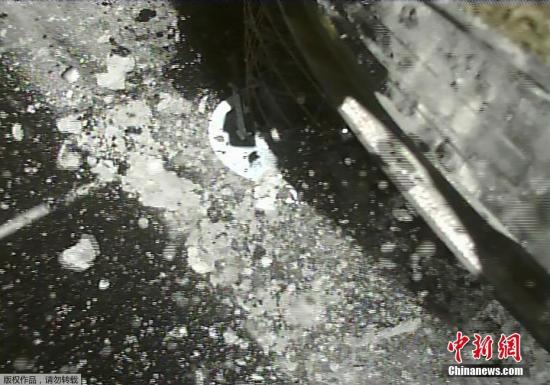December 5th – Comprehensive report: On December 5, Japan’s asteroid probe Hayabusa 2 released a sealed chamber that may contain the asteroid Dragon Palace gravel to the ground. The capsule may be released into the desert of southern Australia at 2:50 a.m. Japanese time on the 6th. It is reported that gravel samples that may be brought back may help explore the origin of the solar system.
According to the Japan Broadcasting Association, the launch place of the sealed module is located at the place where the Australian army trains, etc. The place usually strictly controls the entry and exit of people, but this time allows the media to interview the relevant facilities of the recycled sealed module on the 4th.
The facility has the control center of the Japan Aerospace Exploration Agency, and the relevant personnel have confirmed the specific operating sequence of inferring the landing site of the capsule.

Data picture: On November 12, 2019, local time, Koichi Hagioda, the minister of Education and Science of Japan, said at a press conference after the cabinet meeting that the spacecraft Hayabusa 2 of the Aerospace Exploration Agency (JAXA) will fly from the asteroid Dragon Palace to Earth on the 13th.
According to the report, the launch site is also where Aboriginal Australians live. Masaki Fujimoto, deputy director of the Institute of Space Science of the Japan Aerospace Exploration Agency, said: “This is a vast and flat land, which is the most suitable for the safe landing of the capsule and the excellent environment for immediately transporting samples back to Japan.”
According to a previous report by Japan’s Kyodo News Agency, the Japan Aerospace Exploration Agency held a press conference on the 4th. Professor Yuichi Tsuda, the director of the program, said that “the detector was very smooth” and stressed that “it is believed that more results have been achieved than expected”.
Tsuda said that the sealed cabin will land within an elliptical range of 100 kilometers longitudinal and 150 kilometers horizontally. If the separation of the sealed chamber using gunpowder fails, the whole body will enter the atmosphere, as will be the first generation of Hayabusa, which returned in 2010, giving priority to the recovery of samples. The body of the first generation Hayabusa was burned out at that time.
Data picture: The Japanese probe Hayabusa 2 made its second landing in the asteroid Dragon Palace. On the afternoon of July 11, 2019, local time, the Aerospace Exploration Agency (JAXA) announced that almost all the planned major missions were successful.
The report pointed out that if the sealed module is successfully separated, Hayabusa 2 will continue to fly towards another asteroid, 1998KY26, and embark on the next mission.
Hayabusa 2 was launched in December 2014 and made a crater at the destination Dragon Palace. It landed successfully twice. In November 2019, it ended its stay for about a year and a half and set out for the earth.
On the afternoon of December 5, 2020, local time, Hayabusa 2 released the sealed cabin to the ground. In the early morning of the 6th local time, the sealing module will enter the Earth’s atmosphere. From 2:47 to 57 a.m., it landed in the desert near Wumera, southern Australia. It will be recovered as soon as around noon local time on the 6th.



